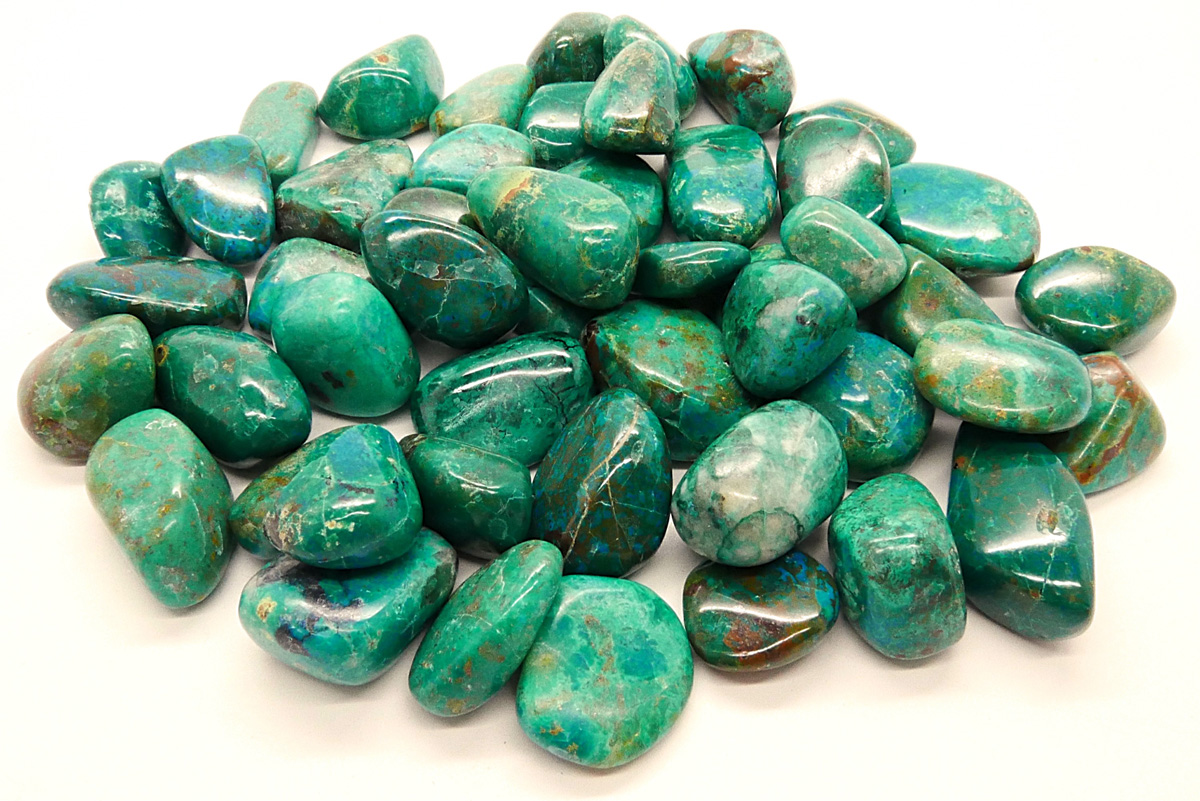
PHYSICAL PROPERTIES
- GROUP Silicates - phyllosilicates
- COMPOSITION Cu2H2(Si2O5)( OH)4·nH2O
- COLOR Blue, greenish blue
- CRYSTALLINE SYSTEM Rhombic
- CRYSTALLINE HABIT Massive
- HARDNESS 2 - 4
- FRACTURE Unequal to conchoidal
- EXFOLIATION Null
- SHINE Vitreous to earthy
- STRIPLight blue
- TRANSPARENCY Translucent to almost opaque
- SPECIFIC GRAVITY 2.0 - 2.4
MINERALOGICAL CHARACTERISTICS
The chrysocolla is a hydroxide copper silicate that is usually found in oxidation zones of copper deposits. It does not usually form crystals and normally appears massively or in radial aggregates. It is a stone appreciated for its varied colors and bluish and greenish drawings. It often appears associated with the malachite and to the azurite. Its name comes from the Greek “chrysos”, meaning "gold", and “Kolla”, meaning "glue" or "glue". In Israel the chrysocolla that appears together with turquoise and malachite is called “Eilat stone”.
Deposits: Mexico, Chile, Peru, India, England, United States, Israel, Russia, Congo and Australia.
THERAPEUTIC PROPERTIES
The chrysocolla is considered the stone of femininity and symbolizes the element of water, healing green and blue. Since it helps balance the hormones that regulate cycles, it is usually used to treat menstruation discomfort, in the regeneration and strengthening of tissues and to promote pregnancy and childbirth. The chrysocolla provides a calming and cleansing energy. Promotes inner peace and favors meditation and communication.


